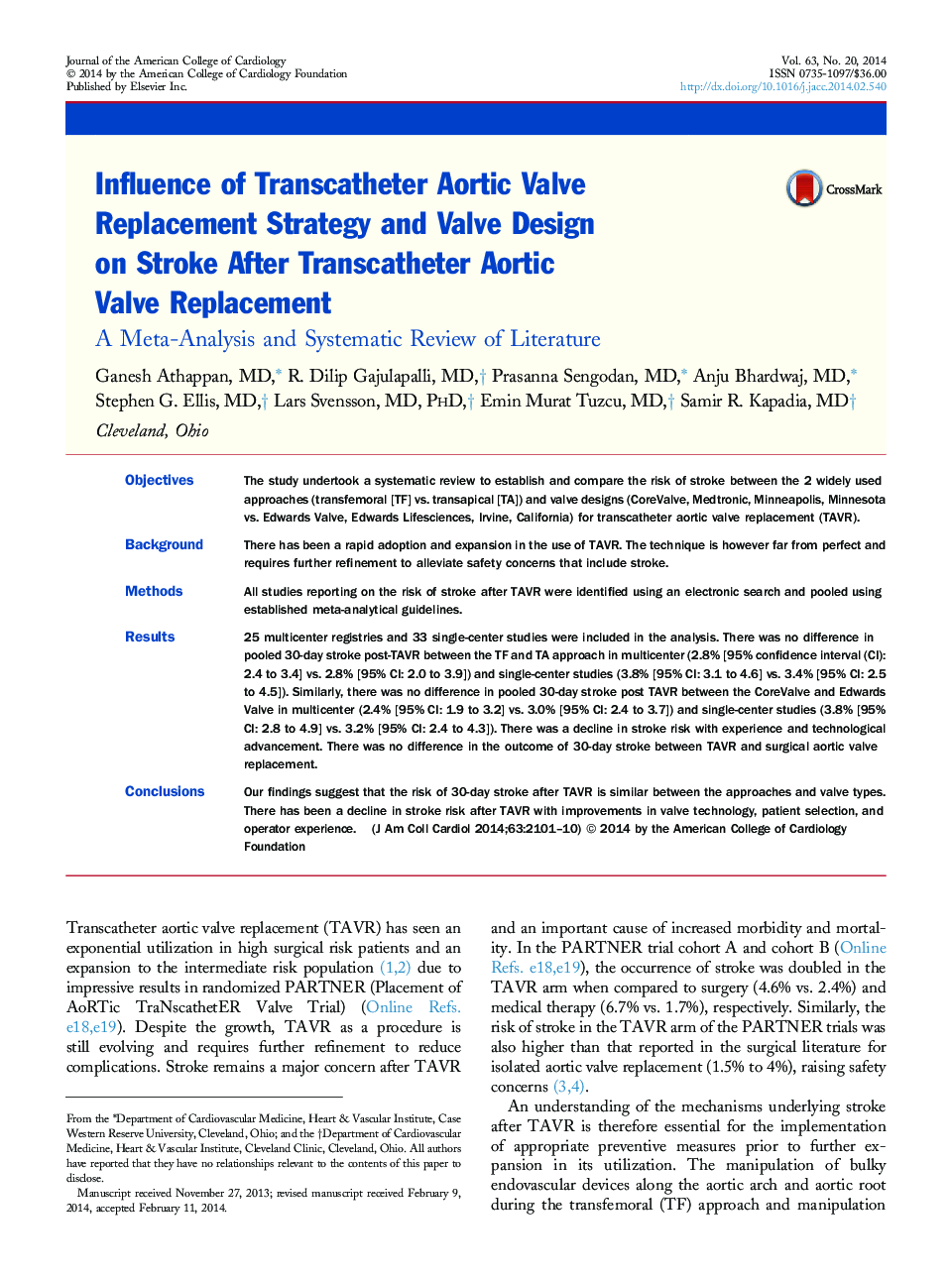| کد مقاله | کد نشریه | سال انتشار | مقاله انگلیسی | نسخه تمام متن |
|---|---|---|---|---|
| 5983115 | 1577102 | 2014 | 10 صفحه PDF | دانلود رایگان |

ObjectivesThe study undertook a systematic review to establish and compare the risk of stroke between the 2 widely used approaches (transfemoral [TF] vs. transapical [TA]) and valve designs (CoreValve, Medtronic, Minneapolis, Minnesota vs. Edwards Valve, Edwards Lifesciences, Irvine, California) for transcatheter aortic valve replacement (TAVR).BackgroundThere has been a rapid adoption and expansion in the use of TAVR. The technique is however far from perfect and requires further refinement to alleviate safety concerns that include stroke.MethodsAll studies reporting on the risk of stroke after TAVR were identified using an electronic search and pooled using established meta-analytical guidelines.Results25 multicenter registries and 33 single-center studies were included in the analysis. There was no difference in pooled 30-day stroke post-TAVR between the TF and TA approach in multicenter (2.8% [95% confidence interval (CI): 2.4 to 3.4] vs. 2.8% [95% CI: 2.0 to 3.9]) and single-center studies (3.8% [95% CI: 3.1 to 4.6] vs. 3.4% [95% CI: 2.5 to 4.5]). Similarly, there was no difference in pooled 30-day stroke post TAVR between the CoreValve and Edwards Valve in multicenter (2.4% [95% CI: 1.9 to 3.2] vs. 3.0% [95% CI: 2.4 to 3.7]) and single-center studies (3.8% [95% CI: 2.8 to 4.9] vs. 3.2% [95% CI: 2.4 to 4.3]). There was a decline in stroke risk with experience and technological advancement. There was no difference in the outcome of 30-day stroke between TAVR and surgical aortic valve replacement.ConclusionsOur findings suggest that the risk of 30-day stroke after TAVR is similar between the approaches and valve types. There has been a decline in stroke risk after TAVR with improvements in valve technology, patient selection, and operator experience.
Journal: Journal of the American College of Cardiology - Volume 63, Issue 20, 27 May 2014, Pages 2101-2110